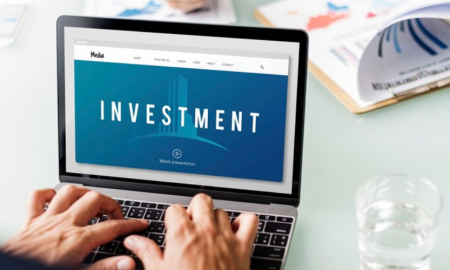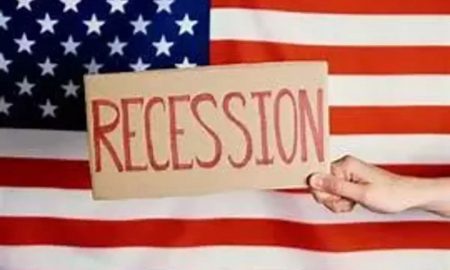
What As a “Good” Annual Percentage Rate (APR) on Your Personal Loan?

More often than not, personal loans can feel like trekking through a financial jungle. Among the most baffling elements is the Annual Percentage Rate (APR), a figure that can significantly impact the cost of your loan.
But fret not! We are here to guide you through the underbrush and help you understand what constitutes a good APR on a personal loan, making your journey as smooth as possible.

Karolina / Pexels / When borrowing personal loans, you should ask yourself: What is a “good” Annual Percentage Rate (APR) on your personal loan?
At its core, a personal loan’s APR is the total cost you will pay annually for borrowing money, expressed as a percentage. However, it is not just about the interest rate. The APR also folds in other fees, like loan origination charges. This makes the APR a more comprehensive measure of loan cost than the interest rate alone.
What Makes a ‘Good’ APR?
So, what IS considered a “good” APR? Generally, it is the one that aligns with or falls below the national average. However, it is crucial to remember that “good” is relative. A sterling APR for one borrower might be unattainable for another due to differences in creditworthiness, which encompasses factors like credit score and debt-to-income ratio.
In 2024, personal loan APRs typically range from 4% to 36%. The broad spectrum reflects diverse borrower profiles and economic conditions. For example, applicants with excellent credit seeking short-term loans might snag rates at the lower end. On the other hand, those with lesser credit or desiring longer terms might face steeper APRs.

RDNE / Pexels / A ‘good’ APR on your personal loans is determined based on your credit score and debt-to-income ratio.
Likewise, the economic climate also plays a role. For instance, average rates have climbed compared to previous years, influenced by the Federal Reserve’s rate adjustments. These shifts mean borrowers are generally facing higher costs for personal loans than they might have in the past.
How Can You Spot a Good APR?
A good APR for a personal loan is akin to finding the right pair of shoes – it needs to fit your specific financial situation snugly. Aiming for rates at or below the current average is a solid starting point. The lower the APR, the less you will fork over in interest and fees over the life of your loan.
However, when you apply for a personal loan, lenders do not pull your APR out of a hat. Instead, they meticulously assess various aspects of your financial health. These include:
- Credit Score: A high score can unlock lower rates, as it signals to lenders that you are a low-risk borrower.
- Debt-to-Income Ratio: This measures your monthly debt payments against your income. A lower ratio suggests you are more capable of managing loan repayments, potentially leading to a better APR.
- Collateral: While many personal loans are unsecured, offering collateral can sometimes net you a lower rate.

Mikhail / Pexels / Among other factors, the length of your loan can affect your APR. Shorter terms often carry lower rates, reflecting the reduced risk of rate changes over time.
Lenders use a blend of these factors to determine your APR. Your credit score and debt-to-income ratio are particularly pivotal, painting a picture of your borrowing history and financial bandwidth. Meanwhile, factors like collateral and loan terms allow lenders to tailor the APR to the specific loan scenario.
How to Lock in a Good APR?
Achieving a favorable APR on a personal loan is not just about having stellar credit (though that certainly helps). It is also about smart shopping. Comparing offers from multiple lenders can unearth better rates and terms, fitting your financial needs like a glove.
Plus, it is important to keep an eye on broader economic trends, as they can sway personal loan rates. Understanding these dynamics can help you time your loan application to snag a more attractive APR.
More in Loans & Mortgages
-
`
Curious About Travis Kelce’s Net Worth? Here’s the Scoop!
Travis Kelce’s name echoes through NFL stadiums, synonymous with athletic prowess and electrifying plays. But beyond his touchdown celebrations and record-breaking...
June 10, 2024 -
`
Everything You Need to Know About an Assumable Mortgage
What is an Assumable Mortgage? Whether you are a buyer or a seller, understanding the concept of assumable mortgages can open...
June 6, 2024 -
`
Layoff vs. Fired – Understanding the Crucial Differences
When it comes to job loss, understanding the distinction between being layoff vs. fired is crucial. While both situations result in...
May 30, 2024 -
`
When Are Business Taxes Due 2024? Essential Dates and Deadlines
Tax deadlines can be daunting, but fear not! Let’s break down everything you need to know to stay on top of...
May 22, 2024 -
`
How Much Does Jeff Bezos Make Per Hour? It’s More Than You Think!
Jeff Bezos, a name synonymous with innovation and wealth, stands as one of the world’s richest individuals. While Bernard Arnault and...
May 16, 2024 -
`
What is Portfolio Investment Entity (PIE) and How Can it Benefit You?
In the intricate world of finance, individuals seek avenues to optimize their investments while minimizing risks. One such avenue gaining traction...
May 9, 2024 -
`
What is a Bank Statement? Understanding its Definitions, Benefits, and Prerequisites
Ever wondered where your money goes? A bank statement is like a financial report card, giving you a clear picture of...
April 30, 2024 -
`
Branded Content: A Genuine Way to Connect With Your Audience
Have you ever binge-watched a series on Netflix, only to later realize that the beverage everyone’s sipping on is that brand...
April 23, 2024 -
`
What Car Does Jeff Bezos Drive? Find Out Inside His Exclusive $20 Million Collection
Have you ever wondered what car does Jeff Bezos drive? This man’s tastes in vehicles are as expansive as his business...
April 17, 2024















You must be logged in to post a comment Login